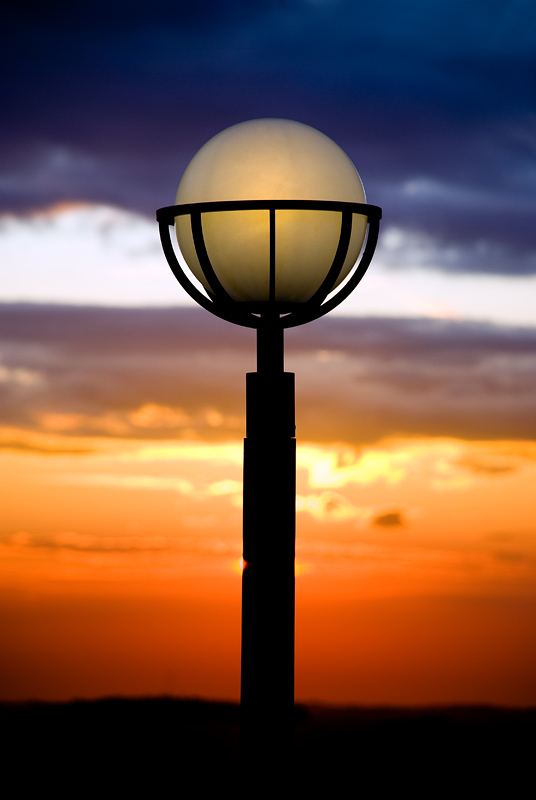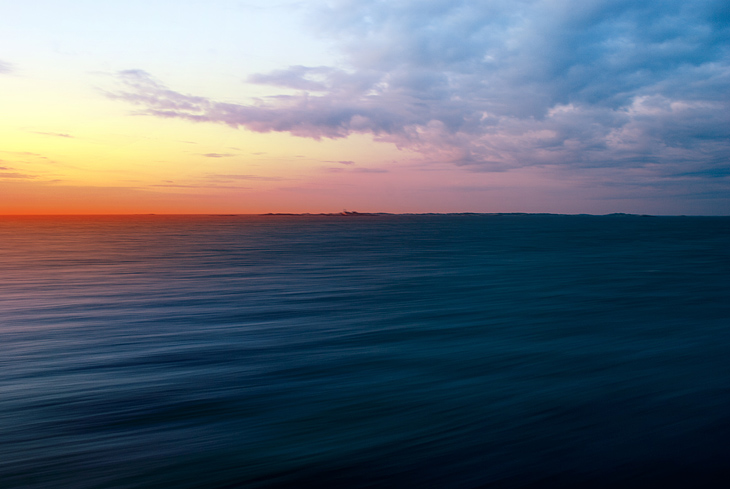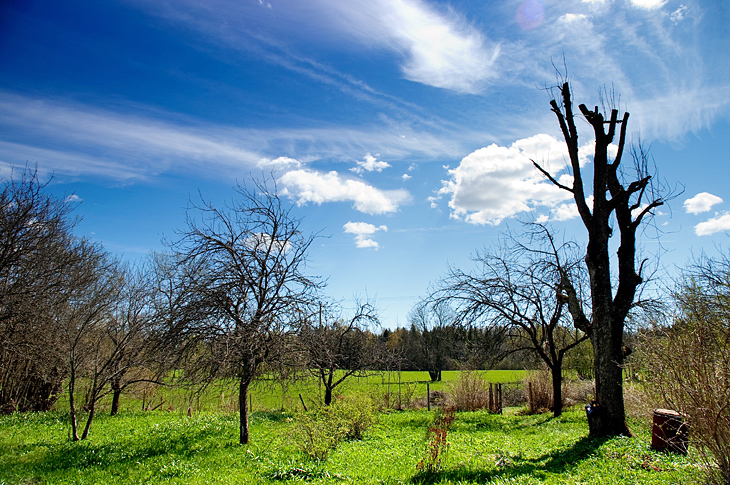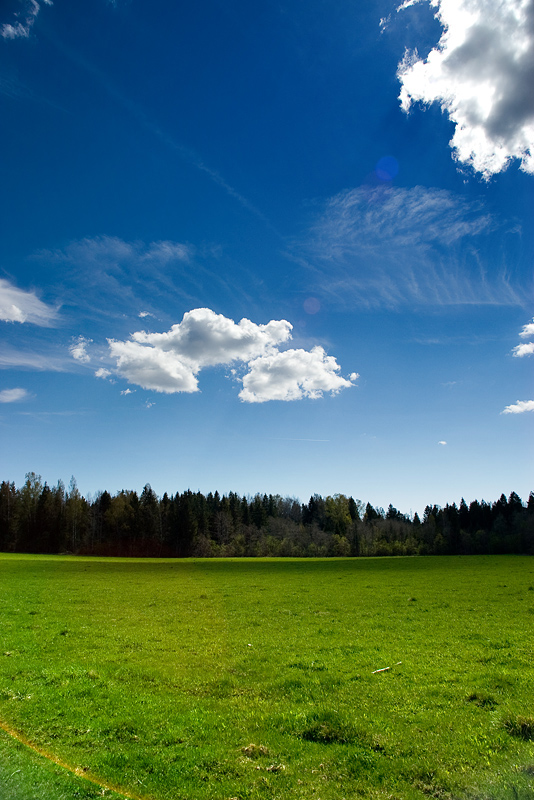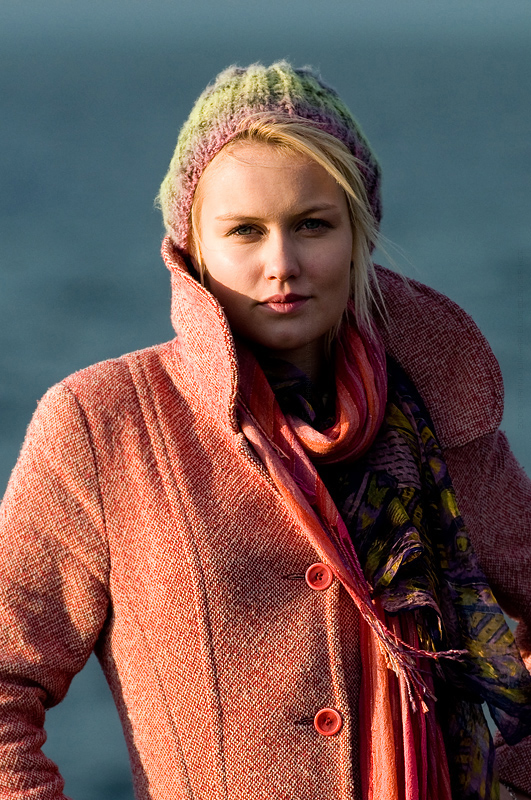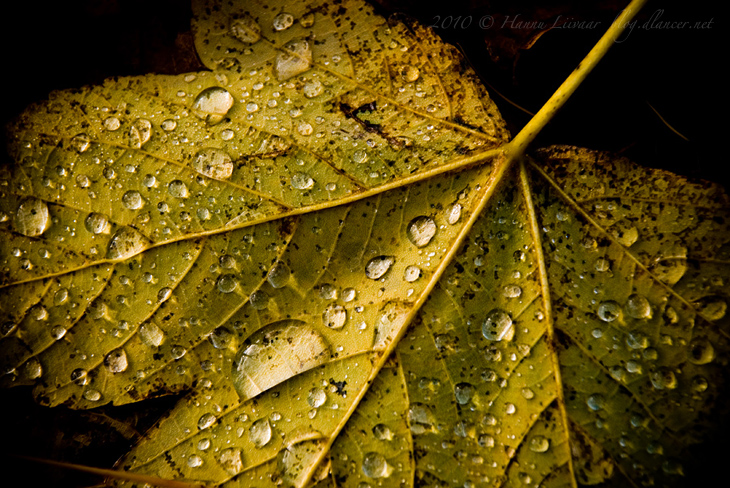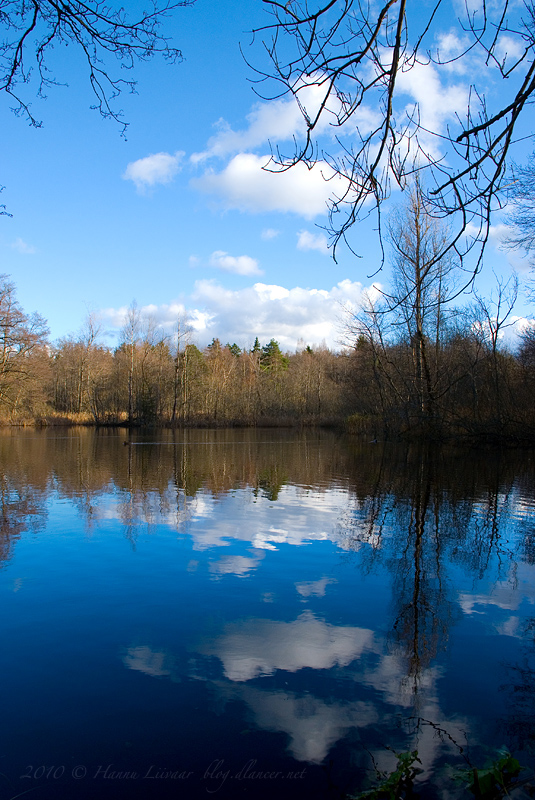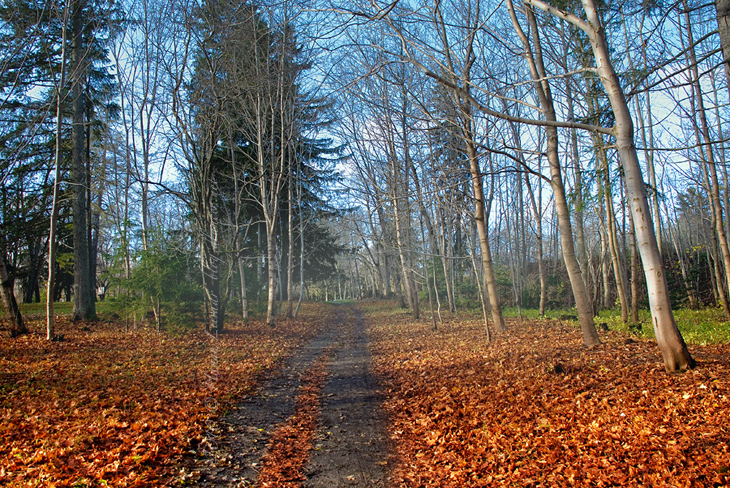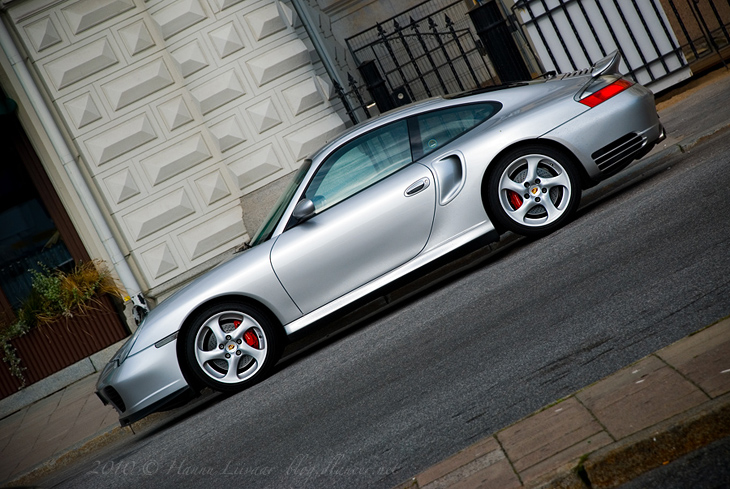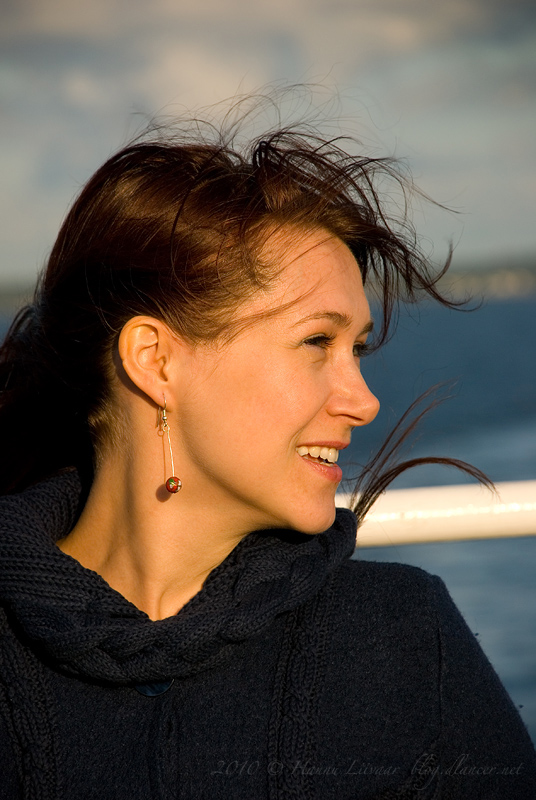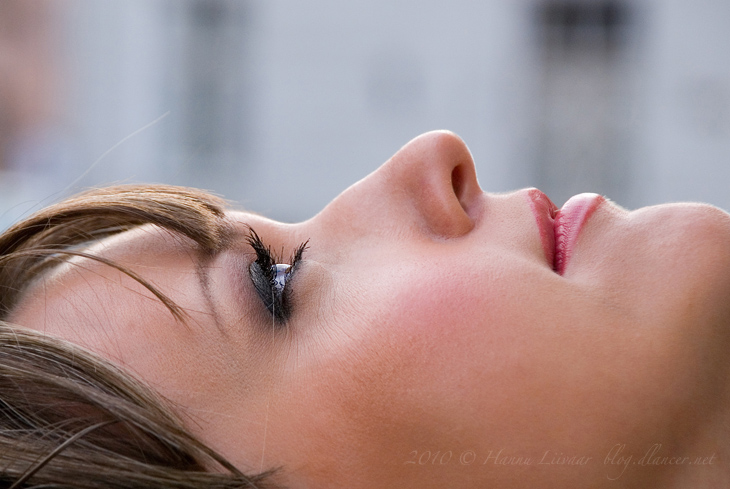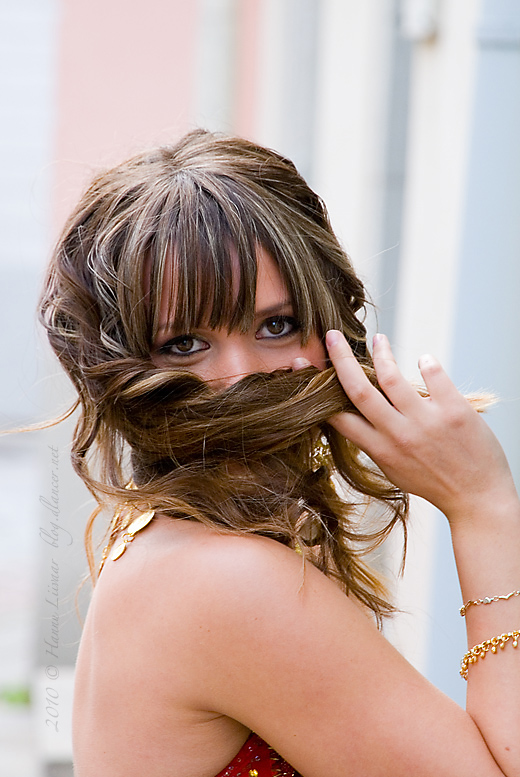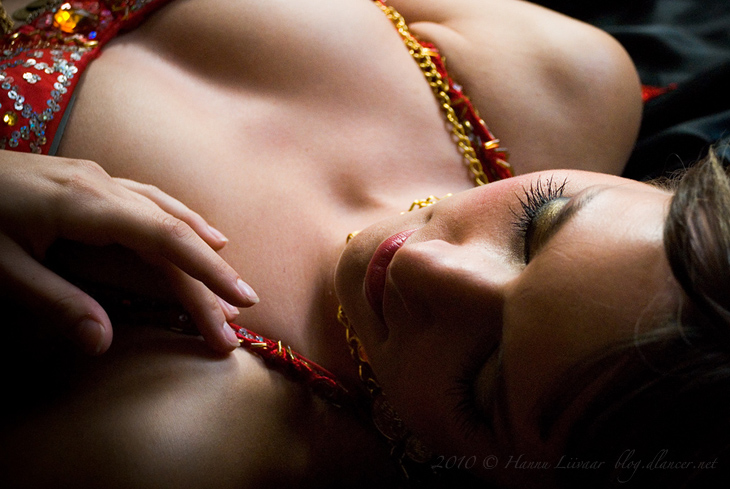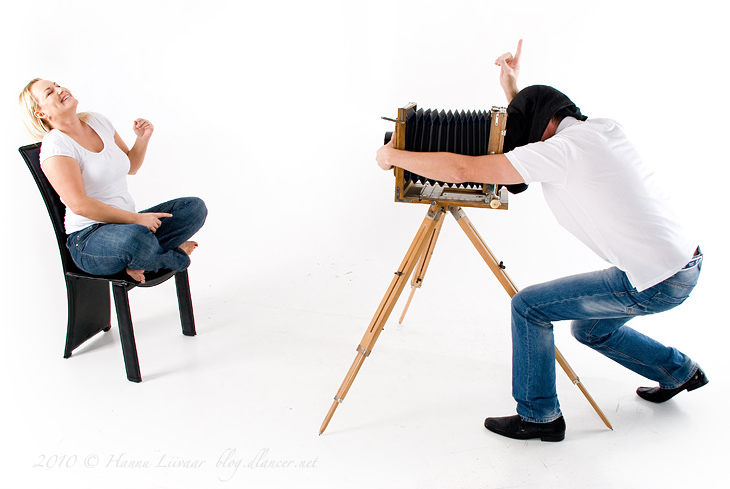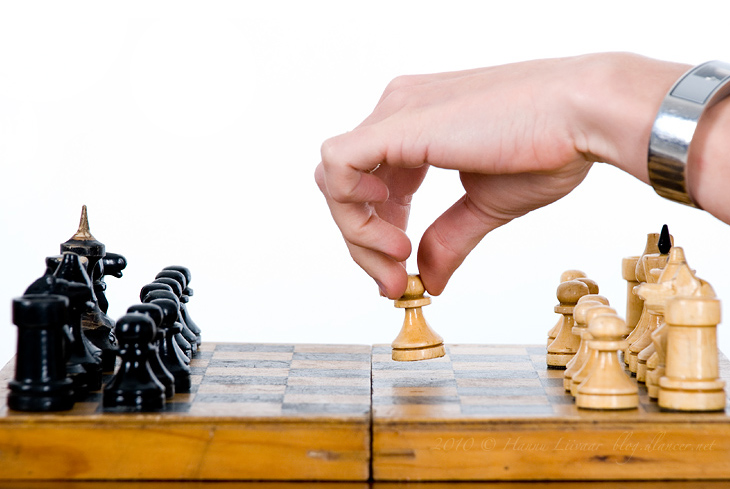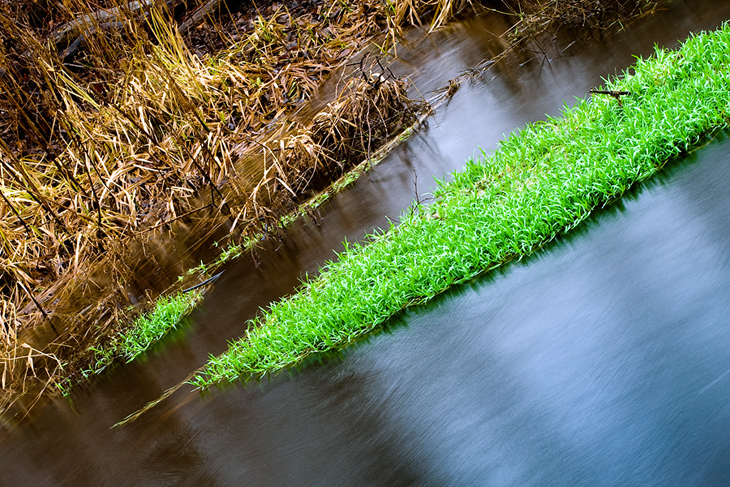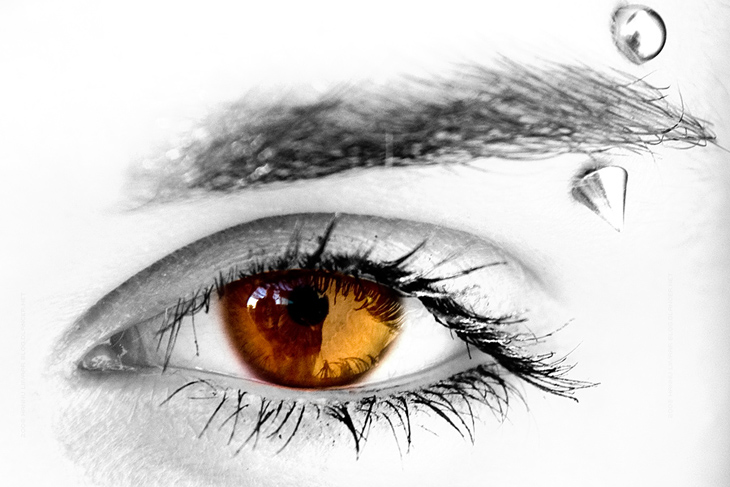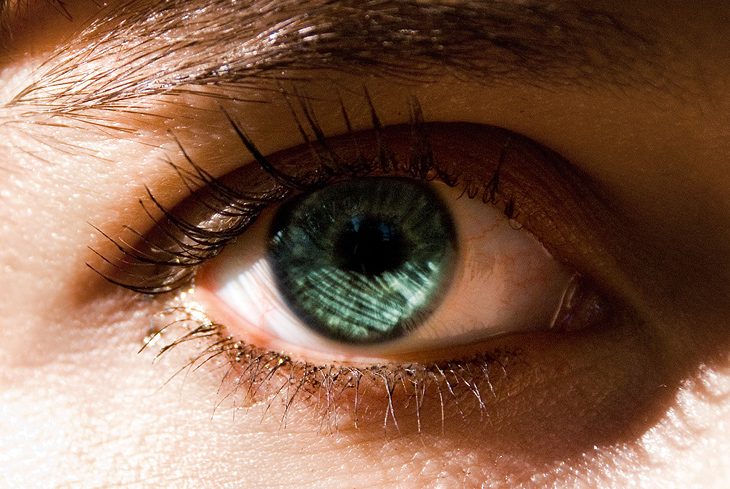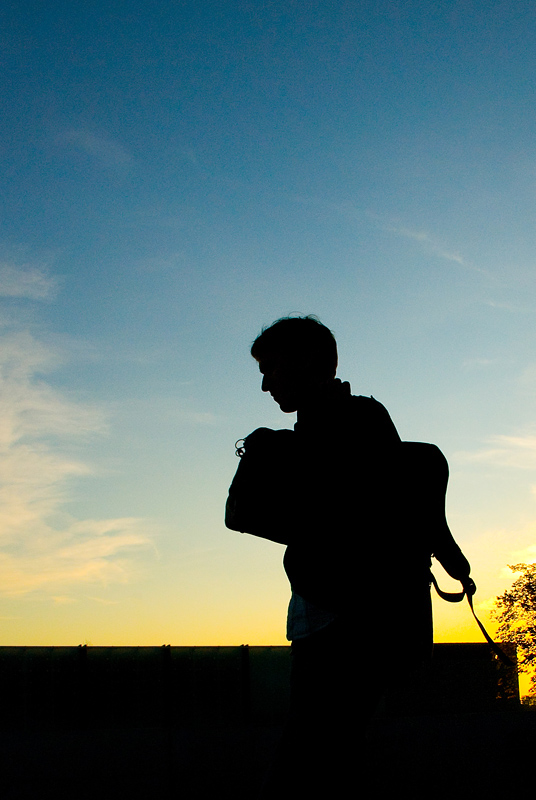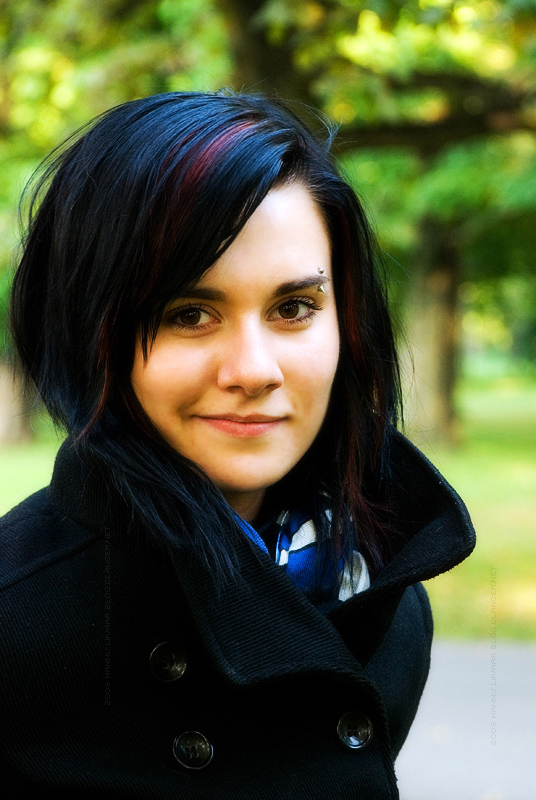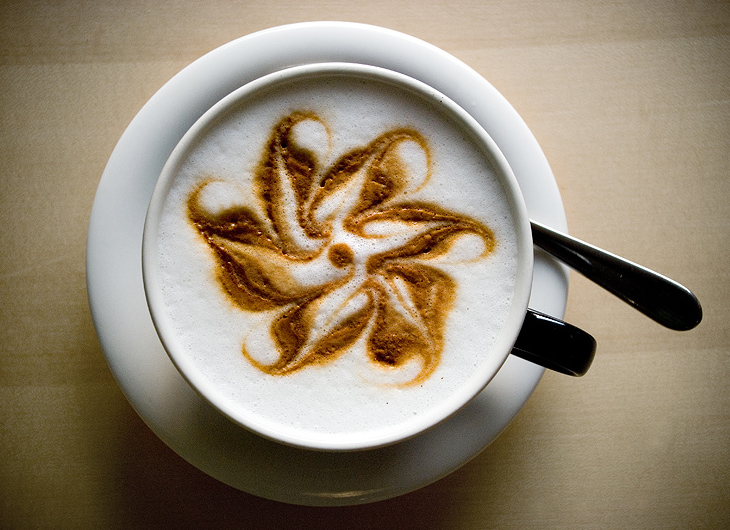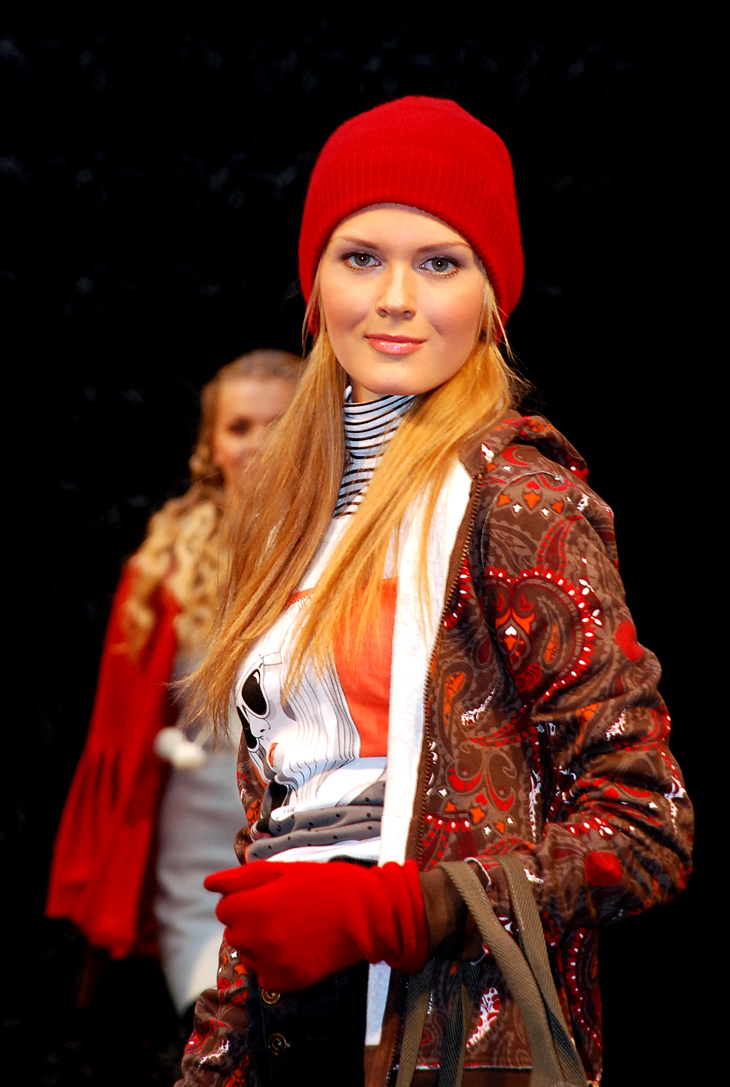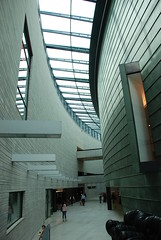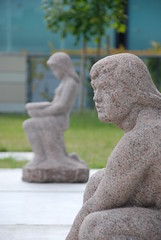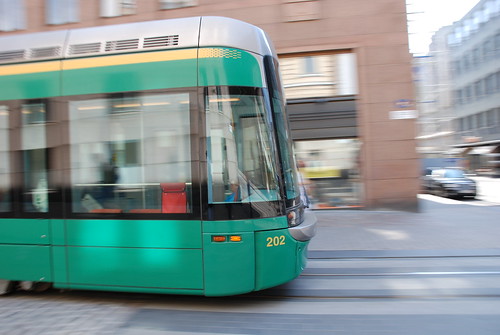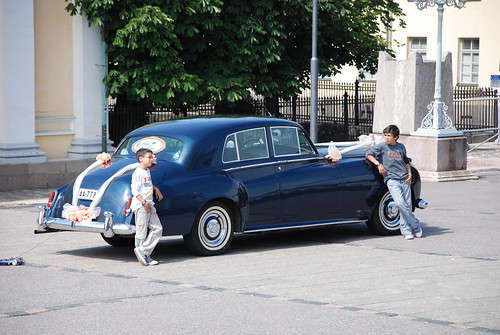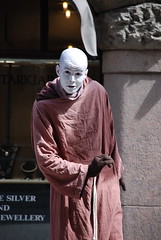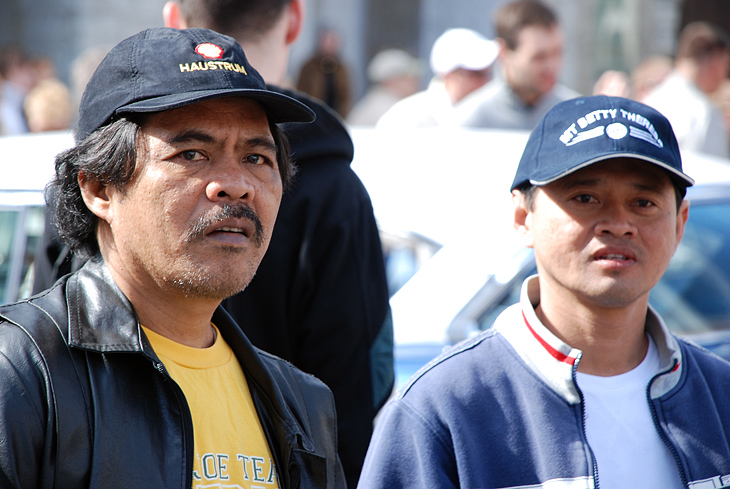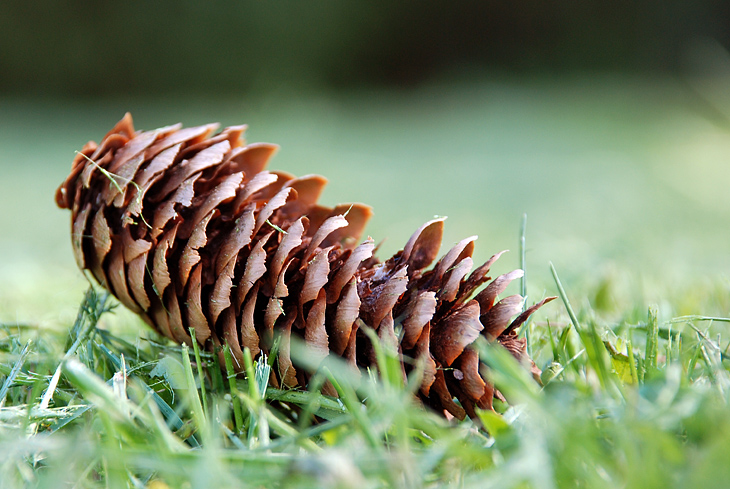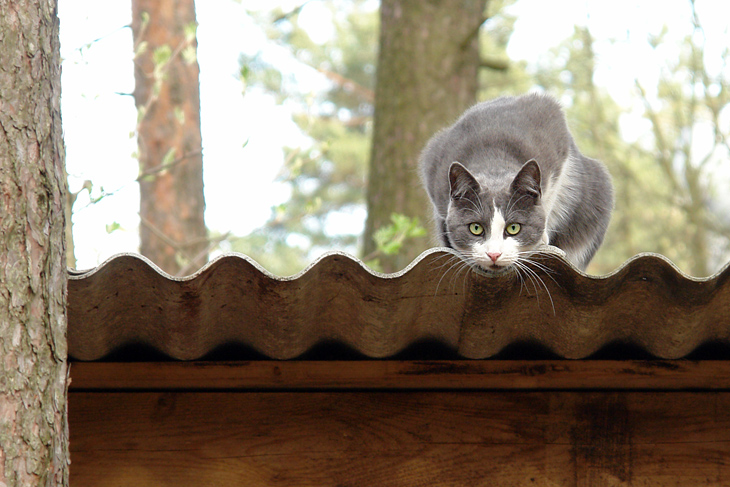Thursday, December 18, 2008
Monday, December 08, 2008
Which DSLR camera to choose?

I often hear the question "which DSLR to choose", so I decided to put together a brief which hopefully brings you a step closer to narrow down the models you'd like to choose from. Five years ago the choice was not that tough (there were times less models), and I'm sure in five years the choice will be almost impossible (when there are about 30-40 models to choose from, today, I believe there will be about one hundred at the year 2013). I'm also follow digital camera news/previews/reviews/articles fantically, so for me the current situation in DSLR market is really interesting :-) I'm also a DSLR user since the beginning of 2005, with experience of using Pentax, Canon and Nikon amateur DSLRs.
It's not that easy to structure the topic, so I decided to start with history, and then just walk through the major issues you're most probably about to meet, when deciding about which one to choose. Be sure you check out different sourced from the web before buying a camera, as understandings and point of views here might differ night and day.
1. History
2. Name mess
3. Sensors
3.1 Focal Length Multiplier
4. Features and Build quality
5. Top manufacturers.
6. Which media?
7. Megapixels
8. Conclusion
This article is mainly for the people considering to purchase their first DSLR (Digital Single Lens Reflex Camera). Ever since the first DSLR-s become available, the question has always been out there. Following is just my opinion which may be obsolete in a certain period of time :) *** All images used here are subject of copyright of their respective owners ***
First, let's take a look at the history - this way we comprehend the current day better.
1995 - Kodak introduces the first digital SLR camera called DCS460.

Based on Nikon N90 body, sensor manufactored by Kodak. Price? $35,000. Consider the inflation, and you see it cost a price of a nice luxury car. Example picture.
1998 - Kodak is releasing DCS560, which is based on Canon 1 body this time.

Despite three years of developing, the sensor is ultimately a brother of the DCS460 - a 6 megapixel CCd, with ISO 80/200 sensitivity and 1fps frame rate. That was ten years ago. The body, of course, was a a real pro tool, so the combination of these two cameras was sold new around $30,000. Both 460 and the 560 had the focal lenght multiplier 1.3, which is a tiny bit smaller than the full frame. Here's one nice review of this camera still available.
Kodak also announced another 2.0 megapixel DSLR at 1998, with 1.6x (typical Canon's DX format digital body multiplier today) focal multiplier, housed at Canon 1N pro body. The major advantage of 2 megapixel sensor was sensitivity up to ISO1600, also impressive 3.5FPS frame rate. Suggested retails price $15,000 :-) Phil Askey (founder of dpreview.com) has also written a small preview about this camera - here.
1999 - It seems Kodak is still not sure about is Canon better or Nikon. Not much of an improvement over the DCS520, Kodak announces DCS620 - this time based on Nikon F5 body. Pictures are somewhat cleaner in terms of noise, however the megapixels and ISO levels (also the fps) are the same.
In June, Nikon releases its first DSLR, Nikon D1.

Almost three times cheaper than Kodak 620, with more megapixels and the same pro body - really tough answer to Kodak. The body design has basically remained the until today, including D1H, D2, D2H, D2x, D3 and finally, D3X. The D1 had 2.7 megapixels, up to ISO 3200 sensitivity CCD sensor, and a new standard in terms of speed - 4.5 frames per second.
2000 introduced first "home grown" Canon - the impressive 3 megapixels Canon D30. Priced at $3000, it was becoming more affordable to serious amateurs and semi-pros. Canon also has the CMOS sensor as opposed to CCD, which means lower noise and lower power consumption. D30 was based on EOS-1N body, full metal chassis and excellent build quality. Later Canons ike 10D, 20D, 30D, 40D and 50D were based on the same body. This is Canon D30:

Don't let the name fool you, Canon also has the 30D in this line of DSLR-s, announced probably around 2006, a nice 8 megapixel semi-pro digital camera.
So we can say the year 2000 was a breakthrough year for digital SLR cameras. A year or two later Olympus, Sigma, Minolta also announced their first DSLR-s. And recent years, you also can see Samsung (basically pentax with Samsung's label), Sony (former Minolta), Sigma (with interesting Foveon sensor) and Panasonic (successful newcomer) cameras at the shelves of camera stores.
The name mess.
Also as with the names, Canon and Nikon have really poor marketing divisions, all they can invent are D50 and 50D, D40 and 40D, D30 and 30D, 10D, 20D D60, D70, D80, D90, D100, D200, D300, D1 and 1D, D2, D3, 1Ds, 1DMkIII, 5D, 7D.. now name which is canon which is nikon unless you have followed the production line for years. Tough competition? This all is mixed with ***D, **D, D*** and D** lines - Nikon prosumer line is D70, D80 and D90, while two-digit line marked at canon bodies means semi-pro cameras: 10D, 20D, 30D, 40D, 50D. So it is opposite with ***D - canon consumer DSLR-s are 300D, 350D, 400D, 450D.. while Nikon's semi-pro line is D100, D200, D300. Go figure! :P The market of DSLR-s is actually really narrow with 3-4 segments in it. New trends (like Canon 1000D and Pentax KM) show there's room for more segments (1000D and KM are ultra simple and budget DSLR-s).
So ultimately, when you go out shopping and get buzzed with 40D-s and D40-s, this is the way two big boys want you to be buzzed :-) Get used to to it. As you can see, Canon has also fooled themselves, by releasing both D30 and 30D. Don't the D30 look like a Nikon's product? I'll not be surprised when Nikon announces a "baby" Nikon D30 somewhere 2009/2010 (to meet the new ultra-budget DSLR segment opened by Canon and Pentax). As with the names in general, combination of one (or two) letter and one or two numbers seems to be choice of all camera manufacturers on planet Earth. Contax N. Sigma DP1. Sony R1. Fujifilm S5. Canon 50D. Nikon 3D. Minolta 5D. Canon 5D. Minolta 7D. Nikon D40x. Canon S80. Ricoh R1. Leica M8. So 1 is a definite choice #1. Number one, first, best. And D is the ultimate choice from letters - D = Digital.
With regards to continue with history, 2000 was a breakthrough year. Another player, Fujifilm, introduced their first DSLR camera - Fuji S1 Pro. Based on Nikon D100 (D100 was based on Nikon F5), Fujifilm has their own Super-CCD sensor built in the Nikon's superior body. The advantage of Super CCD was their better dynamic range (CCD had the weakest, CMOS somewhere between them), however the interpolated resolution (R,G,B layers at certain megapixels) was not up to the level of native CCD/CMOS sensors. So when fujifilm announced 6,1megapixel DSLR, it was actually 3 megapixel sensor with Red and Green layers in it. The marketing division, of course, advised to announe this as 6 (3+3=6), so this is what you read later from advertisements. In general, Super CCD-s are nice techology, I suggest to read about this more ;-)
Sensors.
The sensors are pretty specific items to write books about their (dis)advantages and differences, but in a word Canon CMOS are considered the best these days. Sony is the 2nd largest (if not #1 already) a long time supplier for Nikon and Pentax (the 6.1mpix CCD sony sensor was probably the most produced DX sensor ever). Now it seems Nikon is picking up (D3 and D700's sensor is supposed to developed by Nikon), and there are some other sensor manufactures like Fuji (Super CCD), Sigma (foveon), Olympus/Panasonic (probably use shared (LMOS) sensors). This is it, generally speaking about FX/DX sensors (half frame and full frame). As sensors are one of the main players when talking about DSLR-s, we'll meet them again later :-)
Focal Length Multiplier (FLM)
The term "focal multiplier" is used when the sensor of digital SLR is different to traditional full frame 35mm camera. Most used sensor size of DSLR-s these days is about 24x16 millimeters, which is approximately 1/3 of the full frame (36x24mm) in terms of physical area covered. So the term "half frame" is not so correct here, otherwise it would be 24x18mm, which is 432 square millimeters, which is exactly half of the full frame area. To retain the 3:2 aspect ration, the measures of "half-frame" sensor is about 24x16. This gives us focal length multiplier one point five - 1.5. This means that when we have 24mm lens for traditional 35mm full frame camera, it gives us focal lenght 36mm for DX (half frame) camera, with focal multiplier 1.5.
Typical models with 1.5 focal multiplier sensors are (were) all pentax DSLR-s, all nikons except D3(x) and D700, all sonys except Alpha 900.. also fujifilm S* series and probably many more. Note that Canon entry (and semi-pro) level DSLR-s have the FM of 1.6, which means their sensors are slightly smaller than the ones with 1.5. So most of the canon DSLR-s would have the 24mm lens working as 38,4mm lens.
4:3 is a different story. Olympus and Panasonic has gone with their own way, with having physically even smaller sensors than traditional 1.5FM sensors. Typical sensor size of olympus or panasonic DSLR is approx. 17x13mm which is considerably smaller than 24x16. This gives us FM of 2.0 so the 24mm lens would work 48mm in front of your Oly/Pana camera. You can easily follow this by reading the numbers from your lens, Olympus "kit" lens usually start with numbers "14", so double it, and you get 28mm - traditional wide angle.
Another FLM sometimes met is 1.3 - this is used by Canon 1D non full frame cameras, like Canon 1D Mark2, 1D mark3. The physical sensor size is about 29x19mm, so 24mm lens would work as 31mm lens in front of your Canon 1D. The first Kodak's also had the same FLM-s, so who knows, maybe this FLM comes from there (remember Kodak built one of their first DSLR-s using Canon EOS-1 body). .. There may be other FLM-s available, but these were the most common ones.
Features and Build quality.
Why it is somethimes, that cameras with the same sensor differ times in price? For example Canon 1000D and Canon 40D - almost two times price difference. It usually comes down to build quality and features, which can also be considered as general uselfulness of camera. When the sensors are the same (so the final pictures of the same subject will be theoretically looking identical), then what's the difference? Here are many interesting aspects, first of all, build quality. Canon 40D is aimed for pro market - to be simple, it has metal chassis body, bigger viewfinder, better sealed connections and buttons, better FPS (framer per second) faster autofocus, more accurate metering, better battery, pro media usage, longer shutter life, bigger image buffer and faster responsibility, compared with it's "little brother" Canon 400D. So the main question will be, do you need all this to pay double price? If you are using your camera every day with different conditions, the aswer is probably yes. Should you drop your camera, should it rain outside, should you need to shoot something fast - a 40D can do all this better than 400D. Meanwhile, 400D will do this all as well, however it's physical tolerance will be smaller, it's resistance to humidity and raindrops is smaller, and it may not focus objects as quickly as you'd like to. So you have to think about all this before you take out your hard earned dollars.
The top of the line cameras (Canon 1D* series, Nikon D*) usually priced few thousand dollars, are the best the technology can provide - so meanwhile they offer the same (or slightly better) image quality than semi-pro bodies, they are built like tanks, have usually two memory cards, batterly lasts few tohusand shots, viewfinders are big and clear to manually focus tiny piece of object at dim light, memory buffer is large for shoot 100+ RAW's, focusing speed is very good and the metering also works like a charm.. top of the line bodies are also loaded with uncountable set of features you ever can imagine, they're UI-s (user interface) are in constant development, shutter life is few hundred thousand cycles, etc..
To summarize, the price difference can be ten on twenty times, and higher price just means better using experience. If you shoot nature, don't need high speeds and body you can use as a hammer to nail the picture at your wall, the entry-line DSLR-s should be decent enought. Due to tough competition the build quality of entry cameras is already very good, so they'll last like a charm even in pretty tough conditions.
Camera manufacturers.
Nikon or Canon? Sony or Pentax? Olympus or Panasonic? Sigma or Fujifilm? You name it :)
Canon and Nikon are two big guys today. There are tons of info available about the market share for recent years, so you can take a look at your self. Canon and Nikon are the press choice, and if you want to go for sure with DSLR, get Canon or Nikon - simple answer for "which camera to buy". Both camera makers have long sucsessful history with creating state of the art cameras, so you can't go wrong with them. Availability of lens is also decent, so you can easily afford buying used lens to start exploring DSLR world. If you are still not sure which to choose - canon or nikon, try both of them - and the choice becomes clearer.
Entry level models for Nikon these days are D60 and D90 (both are non-pro cameras, so platic bodies and other "prosumer" characteristics) with D90 approximately doubling the D60 price wise, so be sure you try them at your local camera store before spending your bucks. D90 has better sensor (yes, also 2 extra megapixels, which is not that importatnt), better viewfinder (it's nice to see what you are shooting), better battery, better LCD screen, HD movie mode (first DSLR able to record video) and some other bells and whistles compared with D60.
With regards to Canon, you can probably meet 1000D, 450D, 40D and 50D at your camera store at the moment. 1000D and 450D are from the same family (1000D is newer but slighly "cut" version of 450D), 50D is the "successor" of 40D, offering some more megapixels and extra features. So again, try them all out by yourself to understand your needs. The major legendary (and probably of the key elements for success) is the excellent CMOS sensors and even more excellent picture processing engine (DIGIC, DigicII, III, IV) resulting in sharp, colorful, noise-free images just right out of camera. Compared with Nikon, CMOS sensors have probably been one of the strongest arguments against Nikon, also.
Sony/Minolta. Currently just right behind the Big Two, sony (former minolta, sony bought Minolta's camera division a few years ago) has made aggressive and successful breakthrough to DSLR market in 2-3 years. Already their first baby (Sony Alpha) was a decent camera to use - while this one was more like Minolta, the next generations were already clearly made with new fresh "sonyish" ideas in mind. For beginners, today you'll probably find Alpha 200, 300, 350 (entry models) and A700 for serious amateurs. Potential weak points compared with Nikon or Canon might be speed of auto focus and lens availability.
Pentax/Samsung. As with Minolta, also Pentax had difficulties to keep up with big guys, so they joined with Samsung three years ago. The result is excellent build quality DLSR-s with ultra fast responsive feel. Pentax also has pretty wide selection of lenses available through decades, though probably not so wide as Canon or Nikon. The weakest point with Pentax (Samsung) DSLR-s could be their image processing engines - this means JPG-s out of your camera may not be at the level of what it the other manufacturers can offer. If was actually a real issue with older models like *ist D, DL, DS and K100D, also K10D, but it seems they have improved their technologies so K20D / K200D, K-M already have pretty good JPG output. Pentax/Samsung cameras are also the "best bang of the buck" choice, as with the same features and build quality, you can often buy one at better price than the others.
Olympus/Panasonic. Olympus announced their first DSLR at 2000. While the discussions are out there was it a real SLR (lens were not changeable), olympus still seemed to like to name it this way, and as the body biuld quality was one of the best available these days, also the lens were superb and bright, users more or less accepted the DSLR for it, so it really comes down to how we define the DSLR. However E-10 earned warm welcome, so the race had begun, and three years later the first real DSLR with changeable lens, the Olympus E-1, hit the market. This was also the first model with 4/3 sensor (E-10 was with small 2/3" one), so E-1 played a big role for Olympus DSLR product line. The strong points of olympus cameras have always been high quality bodies and brilliant lens, meanwhile the weaker point might be the smaller sensor than the competitors. The sensor, it's pixel/point clarity and sensitivity/noise is meanwhile so big topic, that with regards to a user looking for first DLSR, it's not that important. The sensor is still relatively big and the pictures quality is ultimately times better than any compact digital camera can produce. I'd personally strongly recommend to try Olympus cameras before deciding, in addition to Nikon, Canon, Sony and Pentax.
Panasonic announced their first DSLR lately (probably 2006 or so). As Pana already have pretty tough segment of compact digital cameras, they can afford experimenting with alternative ideas for DSLR market. Recent trends are their 4/3 system cameras with no traditional SLR viewfinder, but just with LCD screen. The fact that they support 4/3 sensor system talks so much by itsself, so the future of this system is probably not the darkest. Panasonic (Matsushita Group's trade mark) is a big player in electronics, so they have some nice backup it terms of keeping up with the newest technologies for digital cameras. Panasonic is also working together with Leica (somewhat similar relationship with Pentax/Samsung - some panasonic cameras are offered with Leica label at almost double price), so a good sensor and good glass.. sounds nice :-) I'm really excited about how Panasonic's camera development will go over the next following years.. The weakest point of Panasonic's DSLR could probably be price - their cameras are not the cheapest you can find. Another intersting thing with Panasonic is their design - it simply stands out from the rest.
Sigma, Fujifilm. Many experts already consider these two names gone from the DSLR market. Both camera manufacturers are especially interesting because of the sensors they put inside of the cameras. While Fujifilm uses Nikon's housing (Latest S5 Pro is D200 based), Sigma has had the power to develop their own bodies as well! Very impressive. If you have tons of time and bucks to spend, it definitely would make sense to buy one of these cameras, and experience with them as an alternative cameras to use today.
Secure Digital (SD) or Compact Flash (CF)?
Simply said, CF is aimed for professionals, SD for amateurs. CF cards are physically larger, more durable, have more connectors/pins theoretically allowing faster data throughput. Majority of entry DSLR-s use SD-s these days, majority of pro DSLR-s use CF-s. As with manufacturers, SanDisk is probably the market leader with Lexar and others (Kingston, Panasonic, Corsair, A-data, Silicon Power..) following.
Megapixels.
Six megapixels are good enough for any DLSR with today technology at given sensor size. You can meet 8, 10, 12, 15, 21, and even 24 megapixel DSLR-s today, but the more pixels you squeeze at the area with the same size, the worse the picture quality, though yes, newer megapixels are often better than older ;) So my personal advice would be not to get fooled by megapixel rally. Six megapixels are 3000x2000 pixels, allowing you to print US letter / A4 sized pictures nice and sharp. When you print it to A3, it is still nice and sharp when not looked with magnifier :) Also as an abstract example - First Canon's DSLR, D30 had 3 megapixels. Today you can find even 14 megapixel compact size cameras. I guarantee you the old 3 megapixel D30 outperforms any small sensor sized ** megapixel compact today in almost any term, because (despite technology is better) the pixels are times more larger, therefore better. So, forget the megapixels, and rather focus on how do the camera feels in use.
Bottom line.
I've now spent couple of hours writing this all and I hope it will helpful for anyone still not sure which DSLR to buy. Should you like to use this article at your webpage/magazine, please let me know via mail bright at dlancer dot net. Once again, please consider reading different sources (like this here) before deciding - every person have their own point of views and black can sometimes be while looked from another angle. The topic leads us to many other discussions like JPG/RAW, which lens to use, DSLR accessories, etc - so once you have experimented around enough with your first DSLR, be sure to check out about all this as well ;)
Also, why not to consider buying film camera? No mess with organizing files, hard disk space, online storage, web galleries.. :P And, whatever film camera you buy today, it is probably that the price will only go up, as many manufacturers have stopped producing 35mm film cameras.. go figure.
World Trip
Why not to take a trip around the world this way :) (click for top of the line pictures of all 195 countries in the world)
Edit: Do not click with old, slow computer - there will be over 1000 thumbnails generated at the single page.!!
Edit: Do not click with old, slow computer - there will be over 1000 thumbnails generated at the single page.!!
Monday, November 24, 2008
Thursday, November 20, 2008
Tuesday, November 18, 2008
Dog Frog
Porsche - For Big Boys Only
Melody Nelson
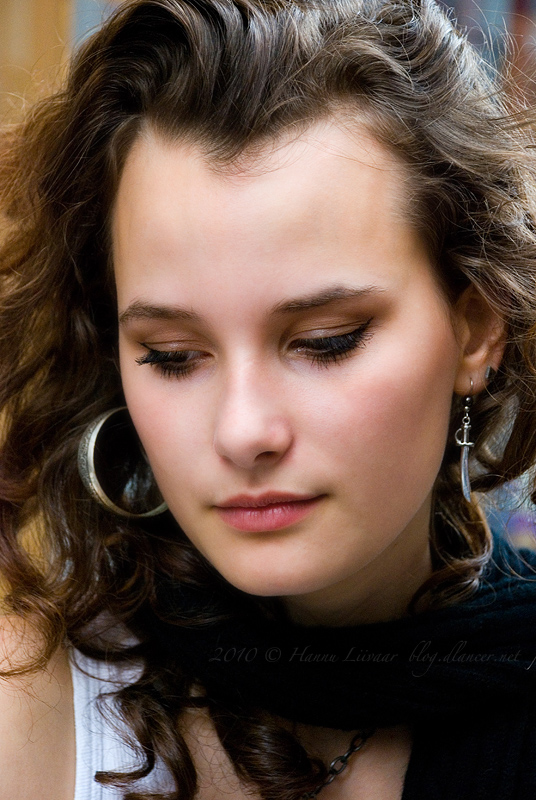
Being somewhat positively desperate what, where or who to capture, this beauty was just spending time at street cafe, giving us permission for to take some photos. That's the story..
Stockholm Sessions September 2008
Considering this as one of my snaps this season. Thanks for the beautiful unknown model :) By the way if you accidentally happen to visit this page one fine day, send me a message - happy to send you the high res picture.
In Motion
Eye II
Thursday, August 14, 2008
Sunday, July 13, 2008
Into the Wild
One of the best movies I've recently seen :) Into the Wild (2007).
Some reading about Alaska (in Estonian Language) as well:
http://suslikute-alaska2007.blogspot.com/
http://suslikute-alaska.blogspot.com/
Friday, July 04, 2008
KUMU interior
Here it is, interior of Estonian New Art Museum (the name KUMU comes from KUnstiMUuseum (Kunst = Art, Muuseum = Museum)
Stone Thinkin
Here they are, all of them, right side of the main entrance at the top of a little hill
Whaddayathink?
One of the stone (what a rough treatment of material) sculptures seen in KUMU (Tallinn)
Thursday, July 03, 2008
Mimic Statue
Good lamb, many names.. living statue, mimic, statue, human statue, statue performer.. This one was one of the best out there in Helsinki.
Dome Church
I do not think there's anyone leaving Helsinki without at least one shot of this building :)
Living Statue
Helsinki, June 2008
Quite a few of the human statues were around in the capital of Finland, meanwhile the difference of their professional level was quite big. Some of them really acted like an experienced street performers, as opposed to the ones just repeating the same mimics as people throw them coins..
of course the real performers seemed to earn accordingly meanwhile the poor performers really struggled with making some good money :)
Quite a few of the human statues were around in the capital of Finland, meanwhile the difference of their professional level was quite big. Some of them really acted like an experienced street performers, as opposed to the ones just repeating the same mimics as people throw them coins..
of course the real performers seemed to earn accordingly meanwhile the poor performers really struggled with making some good money :)
Monday, May 19, 2008
Monday, May 12, 2008
Subscribe to:
Comments (Atom)

